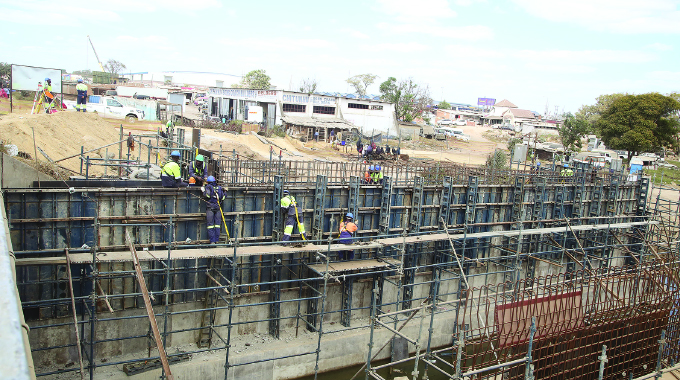Mining digitalisation to provide solid base for sector: Stakeholders

Columbus Mabika
Herald Reporter
THE new digital database based on a proper cadastral description of mining claims that is replacing the old manual filing system at the Ministry of Mines and Mining Development will curb corruption, violence and double allocation of mining claims, stakeholders have said.
The cadastral description is based on the basic survey of the whole of Zimbabwe and is exceptionally precise with no room for argument, since every point can be accurately described and the database will then record every mining claim, its exact status such as who holds the claim, for how long, at what fee and if those fees are up-to-date.
Being on a database means that the information is always up to date and so every mining claim and its owner are precisely known.
The mining sector has seen unnecessary disputes and these have been exploited by some and have seen machete wars and the like.
Government has rolled out the pilot project, which is now operational in Manicaland and is expected to be become fully operational in other provinces by the end of next month.
A computer-based cadastre gives instant and up-to-date land information system containing a record of interests such as owners’ rights, restrictions and responsibilities.
Prior to migrating to the cadastre system, which is more efficient in the administration of mining titles, the country was using a manual system. There were, however, concerns over outdated ownership databases as well as widespread disputes over claim boundaries.
Chief Government Mining Engineer, Mr Michael Munodawafa, said the system was the foundation for a solid mining sector.
“A cadastre is the cornerstone of a secure mineral rights system and records the geographical location, ownership and time validity of mining rights. Moreover, it facilitates compliance with the payment of fees and or other requirements to ensure the validity of a concession,” he said.
“Security of tenure is very important both to large-scale and small-scale mining operations, both in order to ensure a return on investment over the life of a mine but also in order to avoid legal disputes over ownership. The system allows mineral rights’ holders and small and large enterprises to consult and apply for these mineral rights.”
Mr Munodawafa said the system will provide accurate information and positions of minerals.
Chamber of Mines of Zimbabwe Chief Executive Officer Mr Isaac Kwesu said the digital cadastre was the most innovative and efficient concept introduced in the management of mineral rights.
“One of the decisive factors for a thriving mining sector is the security of land tenure. Not only should the mining law guarantee this tenure but the administration of the law and regulations should be fair, transparent, decisive and efficient. It is therefore critical to have an efficient system that enhances investor confidence in the sector,” he said.
To Government, Mr Kwesu said, the digital cadastre system guarantees that the intentions of the Mining Law are carried out in practice and provides management data that can be used to formulate policy making.
Zimbabwe Miners Federation chief executive officer, Mr Wellington Takavarasha, whose organisation represents the interests of artisanal and small-scale miners, concurred saying the cadastre system will bring order to the mining sector.
He said the previous administration of mining titles resulted in disputes related to claim ownership and cases of corruption.
“Previously, because of the manual system, disputes have erupted over mining titles because of double or multiple allocations, but with this modern technology, such issues of disputes as well as corruption will be addressed,” Mr Takavarasha said.
“For instance, with the cadastre system, there are no issues of double
allocations or corruption to talk about anymore. When a prospective miner makes an online registration for mining title, the computer-based system automatically shows details of the land being applied for.
“If the claim being applied for has already had an owner, the system automatically rejects the application for the identified mining claim.”
Mr Takavarasha said addressing corruption guarantees investors security of mining title.
Environmental lawyer, Mr Lenin Chisaira, said the move will highlight environmental obligations and engender more transparency within the mining sector.
“A mining cadastre system is welcome as there has always been great need for transparency, efficiency and access to information in the Zimbabwean mining sector. The mining cadastre system will highlight environmental obligations and restrictions applicable to mining claims, especially those located near ecologically sensitive areas like rivers and wildlife habitats,” he said.
“The system can also minimise incidents of violence and double allocation of mining claims that has been rampant in the small scale gold mining sector.”
Mr Chisaira said the old manual system also created a window for corruption while mining title administration was key towards achieving a successful mining industry.
Turning to mining disasters which have been on the rise, Mr Chisaira said large scale gold mining companies should be held accountable if they fail to obtain certificates of abandonment as required by the Minerals and Mines Act after they abandon their unused claims.
He said disasters expose many hidden malpractices in the mining sector and in environmental integrity as many large scale miners are exploiting the nature of property rights in the gold mining sector, which the cadastre system can solve.
Mr Chisaira called on the Government to provide adequate legal and environmental support systems to deal with disasters and exploitation of artisanal miners and small scale miners by large scale mining entities.
He called on Government to look into the nature of property rights in the gold mining sector and ensure that disaster response systems are evaluated and adequately funded.
The mining sector presently accounts for 70 percent of Zimbabwe’s foreign currency earnings.
Last year, the value of the mining sector rose to US$5,3 billion, and is forecast to grow to US$8 billion this year.











Comments